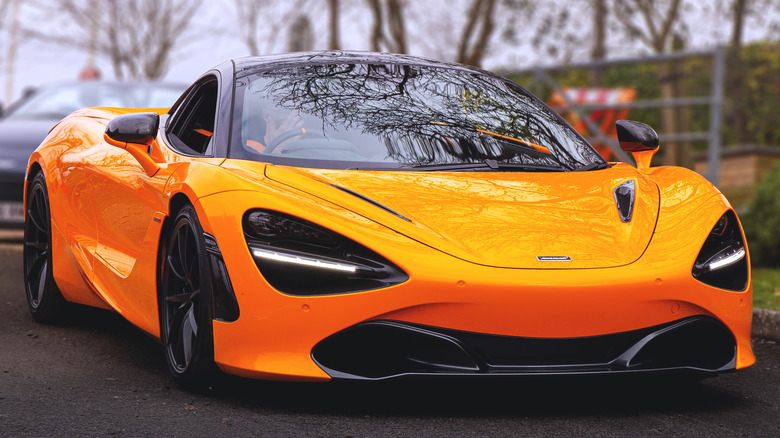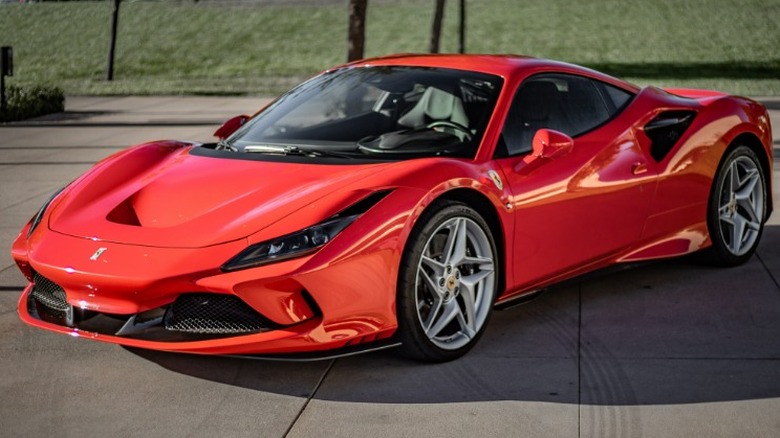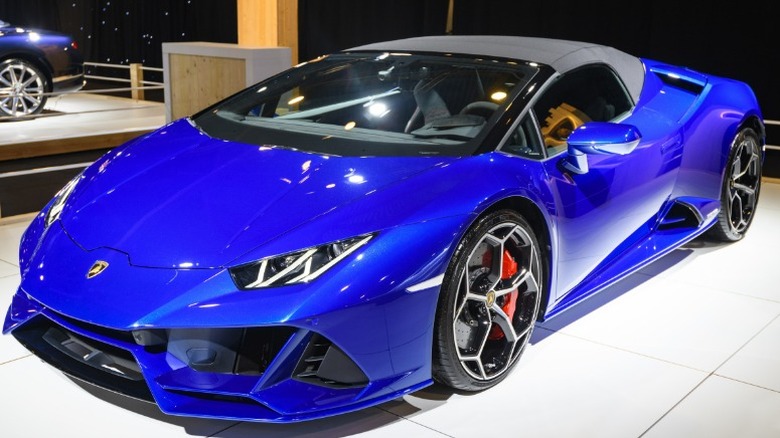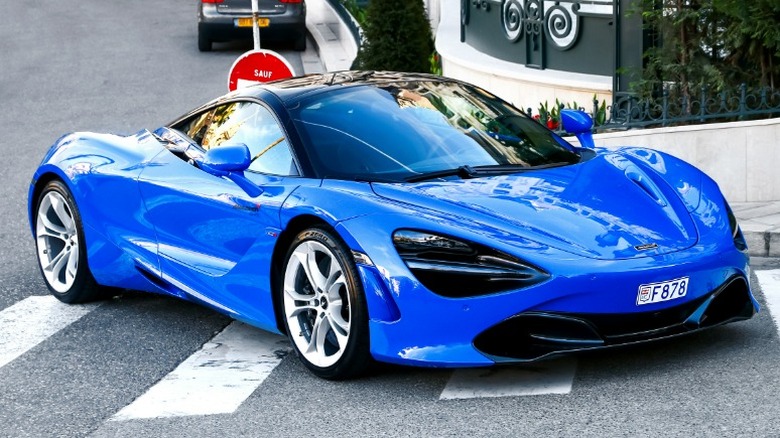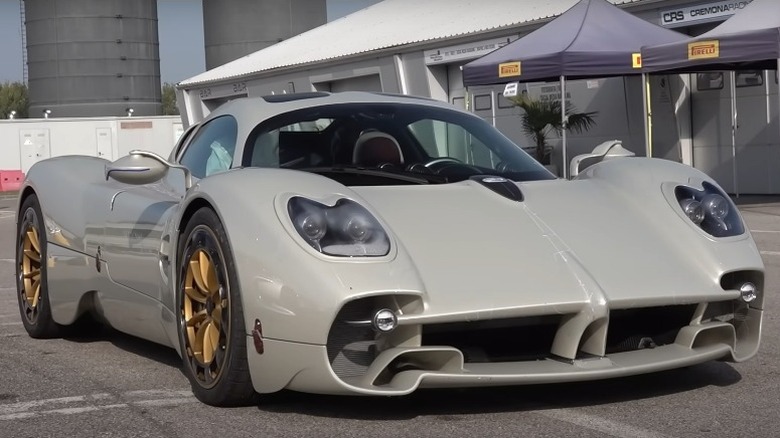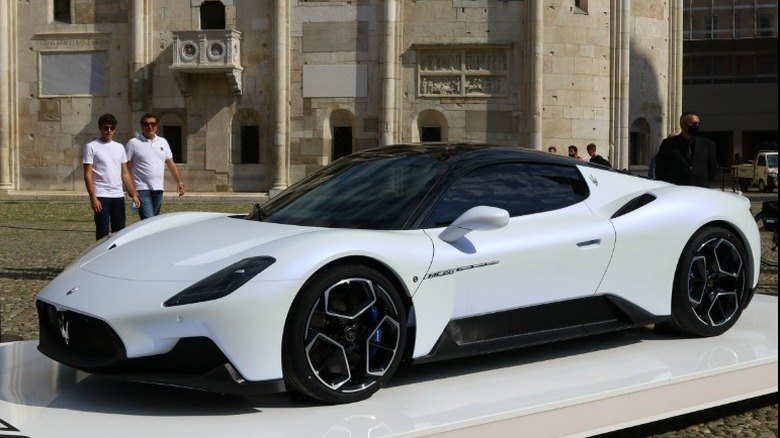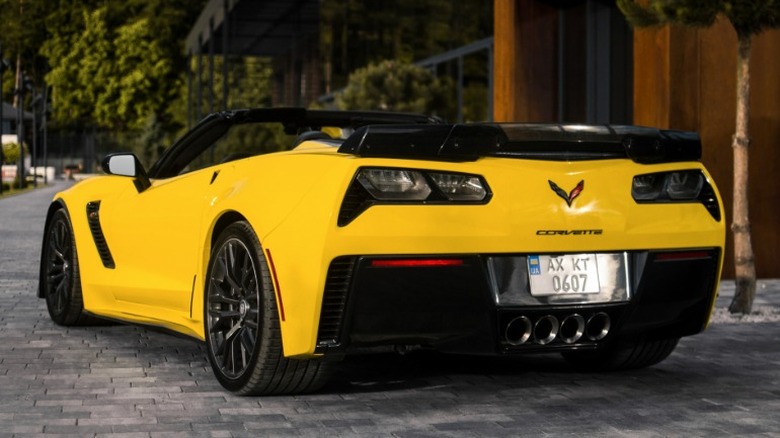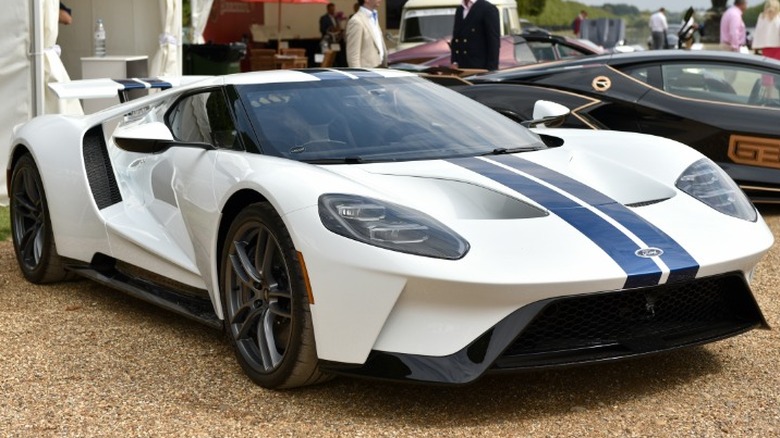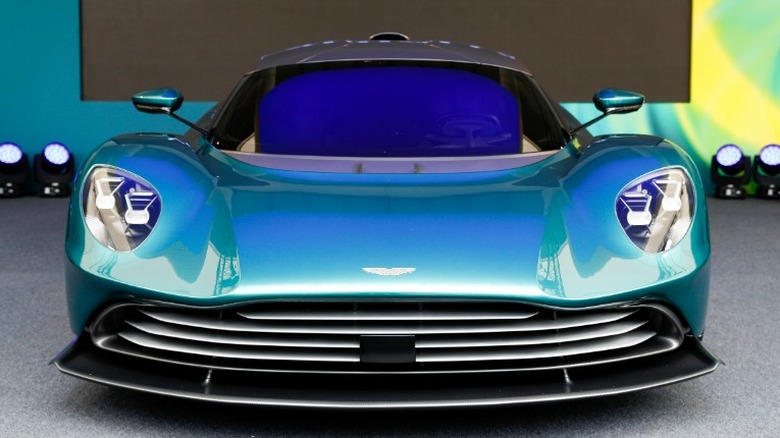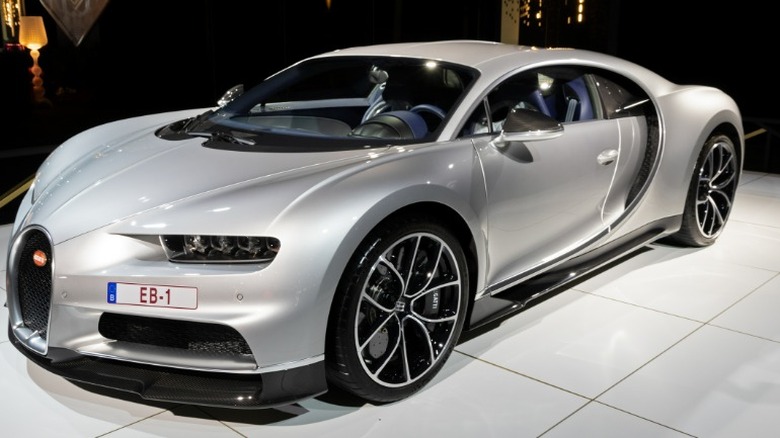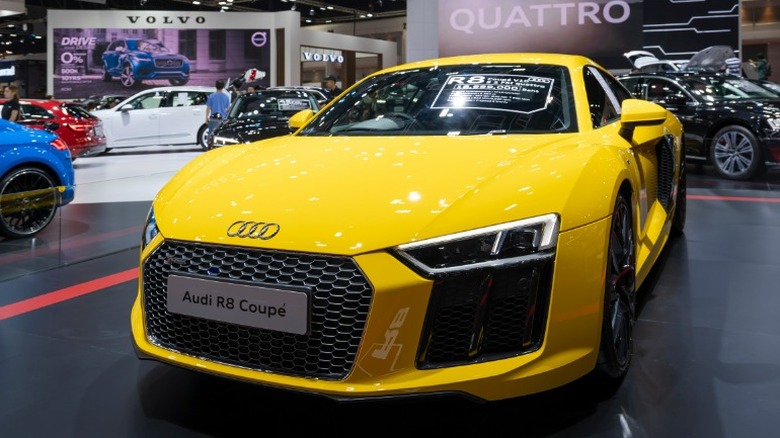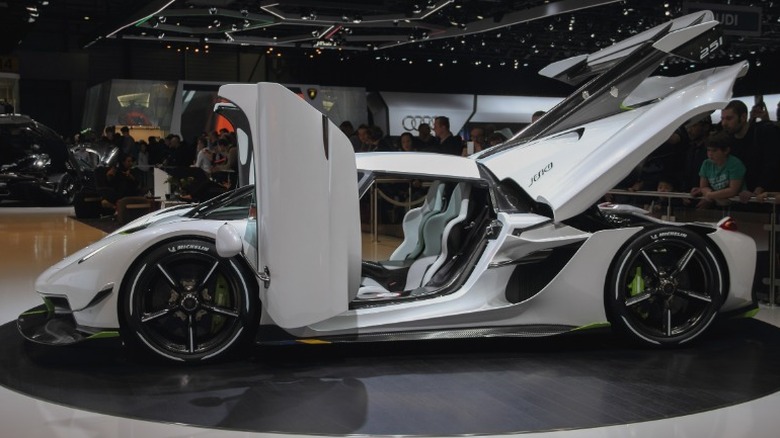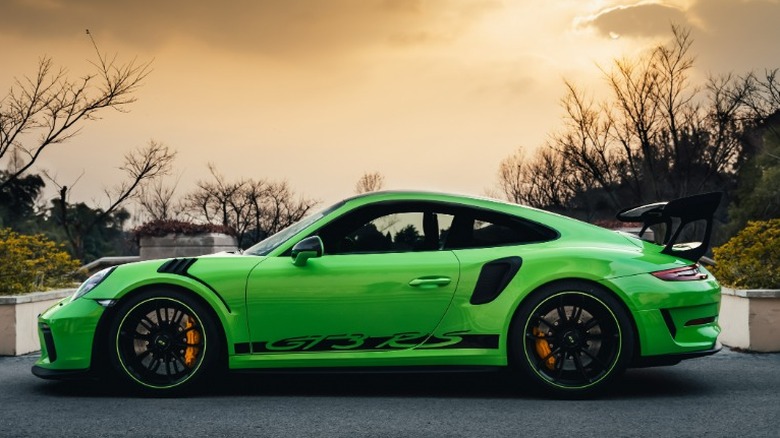The Best Supercar Model From Every Major Brand
The 1966 Lamborghini Miura is considered by many automobile historians to be the first supercar. Lamborghini designed the Miura from the ground up specifically for street use rather than upgrading an existing mainstream vehicle. Today, when automobile journalists, critics, and enthusiasts discuss high-performance cars, they often put them into one of three categories: supercars, hypercars, and megacars. However, the distinction between them is vague, and the terms are often used interchangeably because no official criteria have ever been defined.
Supercars are technologically sophisticated sportscars built for performance that share very little in common with a standard car and often incorporate technology developed from the manufacturer's racing experience. These rare vehicles are usually sold at a price most buyers cannot afford. Hypercars are considered the elite group of the supercar class and are sometimes defined as the very best that the supercar category can offer. The Bugatti Veyron, Pagani Huayra, and Ferrari LaFerrari are examples of hypercars typically produced in extremely limited numbers and sell for over $1,000,000. Featuring state-of-the-art designs and technology, they produce about 1,000 horsepower or more, are often equipped with a hybrid drivetrain, and deliver a level of performance unmatched by most other cars.
Meanwhile, a megacar is the most powerful and rare among hypercars, usually producing more than 1 megawatt (1,340 horsepower). The Koenigsegg Regera is a megacar that combines a 1,100 horsepower ICE with a 700 horsepower electric motor to achieve 1,500 horsepower. Here are the best supercar models from every major brand.
Ferrari F8 Tributo
Introduced in 2020, the Ferrari F8 continues unchanged for 2023. The staggeringly beautiful design is available as a coupe or spider convertible with spectacular race-track performance that is also comfortable to drive on the road. In an era of high-tech hybrid supercars, the F8 remains powered by a pure internal combustion engine (ICE) without electric motors.
Mounted behind the driver, the twin-turbocharged and intercooled DOHC 32-valve 3.9-liter V-8 with direct fuel injection and an aluminum block generates 710 horsepower at 8000 rpm and 567 lb-ft of torque at 3250 rpm. Power is sent to the rear wheels via a seven-speed dual-clutch automatic transmission, producing an exhaust note that always turns heads.
The engine block design has been refined over years of racing experience and its superior efficiency is achieved with the Variable Boost Management system, which controls how much fuel is injected into each cylinder. The five-valve system, variable valve timing, and dry sump lubrication also contribute to the engine's exceptional performance.
The F8 Tributo accelerates to 60 mph in a blistering 2.8 seconds, 100 mph in a mere 5.3 seconds, and reaches the quarter mile in 10.2 seconds on its way to a top speed of 211 mph. Ferrari offers the 2023 F8 Tributo for a base price of $283,950 and the Spider for $328,292, but a host of available upgrades will take it up much higher.
Lamborghini Huracán
Lamborghini first introduced the Huracán in 2014, but over the nearly 10 years of production, the Italian automaker has evolved the model with upgrades and new variants to keep it current. Lamborghini produces the mid-engine Huracán as a coupe or a convertible in three main trims: Evo, STO, and the Tecnica. All versions are fitted with the same engine, a 5.2-liter V10 coupled to a seven-speed dual-clutch automatic transmission. The rear-wheel-drive EVO generates 602 horsepower and 413 lb-ft of torque while the all-wheel-drive version produces 630 horsepower and 443 lb-ft. Both the STO and the Tecnica are only available in RWD, both making 630 horsepower and 417-lb-ft of torque.
Lamborghini designed the Huracán STO for the track with extensive carbon-fiber bodywork, a tuned suspension for maximum cornering, aggressive aerodynamics for maximum downforce, and ultra-high-performance carbon-ceramic brakes. The STO accelerates to 60 mph in a mere 2.8 seconds and reaches a top speed of 193 mph.
The newer Huracán Tecnica has many of the STO track-focused features but lacks the higher-performance aerodynamic elements. It offers a normally trimmed front trunk and a more comfortable interior. However, the Tecnica matches the STO performance, reaching 60 mph in 2.8 seconds and a slightly higher top speed of 202 mph. Although the EVO, with its AWD system, outweighs the other two models at 3,645 pounds, it accelerates harder reaching 60 mph in an impressive 2.5 seconds on its way to a top speed of 202 mph.
McLaren 720S
The McLaren 720S is a track-capable supercar built for the road and available in both coupe and convertible versions. With a base price of $319,100 (most sell for much more), the 720S' elegant yet fiercely athletic good looks make the car seem like it's going 100 mph while standing still. The mid-engine 720S gleans much of its technology from McLaren's years of Formula One experience, giving it phenomenal top-end speed and brilliant driving dynamics. It competes with other supercars in its class such as the Aston Martin DBS, Ferrari 812 Superfast, Lamborghini Huracán, and Ferrari F8 Tributo.
This track-capable but street-friendly exotic car is equipped with a twin-turbocharged 4.0-liter V-8 that generates 710 horsepower and 568 lb-ft of torque. Power is sent to the rear wheels via a paddle-shifted seven-speed dual-clutch automatic transmission. The blistering acceleration from 0 to 60 mph in just 2.8 seconds, although Car and Driver tests show the 720S reaching 60 mph in 2.6 seconds and passing the 100mph milestone in just 5.2 seconds.
While supercar convertibles are typically compromised by less rigidity and more weight, the 720S Spider's core is a carbon-fiber tub that helps limit weight, ensure rigidity, and protect passengers. Despite the heavy retractable hardtop, the convertible matches the coupe's performance. The interior design is less exotic than competitors from Lamborghini and Ferrari but visually pleasing. McLaren offers extensive personalization options, meaning none of the cars are truly identical.
Pagani Utopia
Pagani has unveiled its newest supercar, the Utopia, as the successor to the highly successful Huayra and Zonda. Like its predecessors, the new car offers its own unique style, with an unusual triple rear window arrangement inspired by Riva speedboats and the classic Italian Vespa scooter, albeit with a design theme characteristic of a Pagani automobile.
For now, Pagani has chosen to avoid the trend toward hybridized powertrains in high-performance cars followed by other exotic car manufacturers. The Utopia, scheduled to go on sale mid-2023, will be powered, as is the Huayra, by a twin-turbocharged 6.0-liter V-12 developed by AMG that generates 852 horsepower and 811 lb-ft of torque. Pagani offers two transmission options, a traditional seven-speed manual transmission and an Xtrac seven-speed automated manual transmission that sends power to the rear wheels. Pagani claims the remarkably powerful V-12 will meet U.S. federal safety standards and California's strict emissions standards.
The Utopia achieves its lightweight (2,822 lbs) design with a core structure built using carbon fiber and a Carbo-Titanium material, a mixture of composite and high-strength metal patented by Pagani, lightweight carbon bodywork, and chrome alloy subframes. Although Pagani has not released official acceleration and speed figures, based on the 852 horsepower and its lightweight the Utopia should reach 60 mph in well under three seconds and achieve a top speed near 220 mph. The 2023 Pagani Utopia base price is estimated at $2,200,000.
Maserati MC20
The Maserati MC20 is a mid-engine supercar that boasts a total curb weight of 3,300 pounds and a power-to-weight ratio that results in remarkable acceleration and top speed. Maserati designed the MC20 with a focus on aerodynamics. Extensive wind tunnel tests are credited for developing its slippery Italian body style and the placement of vents and ducts where they contribute to performance. The smooth-flowing body sans pop-up aero and butterfly-style doors draws the attention of passers-by and has them wondering if it is a Ferrari.
The MC20 coupé and its convertible sibling, the Cielo, are powered by a twin-turbocharged and intercooled DOHC 24-valve 2.9-liter V-6 featuring direct fuel injection and aluminum block and heads. The engine, featuring a unique twin-combustion system developed for Formula One race cars, produces 621 horsepower at 7500 rpm and 538 lb-ft of torque at 3000 rpm. Power is sent to the rear wheels via an 8-speed dual-clutch automatic transmission. The Maserati MC20 accelerated to 60 mph in 3.2 seconds and blasted through the quarter-mile in 11.0 seconds.
Maserati builds the MC20 with a front and rear multilink suspension made with carbon fiber for maximum structural rigidity, reduced weight, and optimal handling. Despite the racecar-like performance, blisteringly fast acceleration, and exceptional handling, the adaptive suspension gives the driver and passengers the option of a ride comfortable enough for daily driving or a weekend road trip.
Chevrolet Corvette Z06
Despite its exceptional performance — which often matches the world's best sports cars — the Chevrolet Corvette has often been criticized for its American style. MotorTrend once wrote the sports car was designed for "Middle American old guys. It was a car designed in Michigan and built in Kentucky, and it looked the part." Often criticized for cheaply executed interiors and a tacky design at an affordable price, the introduction of the mid-engine C8 in 2020 made a radical change that vaulted the Corvette into the realm of best supercars at a surprisingly reasonable price.
The 2023 Chevrolet Corvette Z06 is available as a coupe with a manually removable roof panel or as a convertible employing a power-retractable hardtop. Chevrolet equipped the Corvette with the LT6 5.5-liter V8 engine featuring a lightweight flat-plane crankshaft typically found on expensive exotic cars. The mill produces 670 horsepower at 8400 rpm and 460 lb-ft of torque at 6300 rpm.
The interior of the new Z06 is far superior to previous generations, with generous seating space and Corvette's infotainment system. The Z07 Performance Package includes a specially tuned suspension, robust Brembo carbon-ceramic brakes, and high-performance Michelin tires, while the Aero package adds carbon-fiber exterior body elements, a front splitter, and a rear spoiler. The Corvette Z06 is perhaps the best supercar deal for the money with a starting MSRP of $105,300 — especially when compared to European supercars such as the 2023 Ferrari F8 Tributo, whose base price is $283,950.
Ford GT
In 2022, Ford produced the last road-going version of the historic GT. The special edition supercar, with its bodywork wearing Wimbledon White paint and Antimatter Blue exterior details, honors the iconic GT40 race car that dominated Le Mans in the 1960s. The cockpit is barren to keep the weight down but comes with a 6.5-inch touchscreen, is voice-activated, and includes navigation. A 10.1-inch digital gauge cluster displays information ranging from oil temperature to gear selection. The GT has 43 inches of legroom for two occupants, headroom is limited, and, like most supercars, it's difficult to enter and exit.
Ford equipped the GT with a 3.5-liter twin-turbo V-6 that produces 660 horsepower at 6250 rpm and 550 lb-ft of torque at 5900 rpm and a seven-speed dual-clutch transmission that sends the power to the rear wheels. The GT, without the aid of any hybrid technology, accelerates to 60 mph in 3.0 seconds, reaches the quarter mile in 10.8 seconds at 134 mph, and achieves a top speed of 216 mph.
The Ford GT's racecar performance is aided by a sculpted body that adds considerable downforce at high speeds (1,800 to 1,900 pounds at 150 mph). Racing tires that grip the road provide enough traction to make use of the downforce, and 15.5-inch carbon-ceramic brakes slow the supercar down when needed. Despite its racetrack capabilities, the suspension can be adjusted for a comfortable ride on regular roads. In 2022, the Ford GT sold at a starting price of $500,000.
Aston Martin Valhalla
Aston Martin introduced the AM-RB 003 concept car at the 2019 Geneva Motor Show. Subsequently renamed Valhalla, the production version was initially scheduled for delivery in the second half of 2023. However, Aston Martin has pushed out the launch of its most powerful vehicle to 2024. At the core of the Valhalla is its all-new Plug-in Hybrid Electric Vehicle (PHEV) powertrain, which includes a rear-mounted 4.0-liter twin-turbo V8 engine with a flat-plane-crank design. It is the most advanced, responsive, and best-performing V8 engine ever installed in an Aston Martin.
The new V8 engine's power combines with a 400V battery hybrid system, featuring an electric motor on both axles that contributes an additional 204PS. The result is a total power output of over 1,000PS (937 horsepower) and 738 lb-ft of torque. All that power reaches the rear wheels via an eight-speed dual-clutch automatic transmission and accelerates the Valhalla to 62 mph in a blistering 2.5 seconds on its way to a top speed of 217 mph.
Weight reduction is achieved with ample use of carbon fiber for the vehicle's structure and the engine cover. The mid-engine car will feature an aerodynamic body with exceptionally low-drag, adaptive dampers and two-stage springs that are adjustable for an ultra-low track mode. Stopping power will be supplied by efficient carbon-ceramic brakes. Aston Martin plans a production run with at least 999 street-legal versions priced near $800,000.
Bugatti Chiron Super Sport
The Bugatti Chiron is a $3,825,000 masterpiece that defines superior supercar performance and is considered by many enthusiasts to be worth every dollar. As phenomenal as the Chiron is, the Super Sport is even better. Bugatti says, "With the new Chiron Super Sport, Bugatti is defining a new spectrum of speed and performance, enriching the legacy of the Super Sport heritage."
All Chiron models, characterized by the C-shaped design adorning their side panels, are powered by a 16-cylinder engine producing at least 1500 horsepower and 1180 lb-ft of torque. The 2022 Super Sport cranks up the output, generating 1578 horsepower from its 8.0-liter quad-turbo direct-injected DOHC 64-valve W-16. The seven-speed twin-clutch automatic sends power to all four wheels.
Bugatti claims the Chiron does the sprint from zero to 60 mph in a blistering 2.3 seconds on its way to a top speed of 261 mph. Car and Driver beat the time on their test track, reaching the 60-mph mark in 2.2 seconds. Perhaps more remarkable is the official top speed of 304.773 mph turned in by factory test driver Andy Wallace driving a slightly modified Bugatti Chiron at a test track in Germany.
Audi R8 Coupe V10 GT RWD
Although the first Audi R8 was introduced in 2006, it wasn't until 2009 that the German sports car gained true supercar attributes. Audi's success at Le Mans and the Volkswagen Group's acquisition of Lamborghini prompted the automaker to make a power upgrade and performance improvements. Audi installed the 5.2-liter V-10 from the Lamborghini LP 560-4 into the R8, increasing the output to 518 horsepower and 391 lb-ft of torque. The zero-to-60 mph time dropped to 3.9 seconds, and the top speed increased to 196 mph.
The 2023 Audi R8 will be the last production year for the V-10. To honor the powerful engine, the automaker offers a special-edition R8 GT in a RWD coupe configuration with the 5.2-liter engine producing 602 horsepower and 413 lb-ft of torque. The latest R8 accelerates to 60 mph in 3.4 seconds and reaches a top speed of 199 mph.
To improve the already excellent handling, Audi now offers the R8 with electronic stability control for the rear axle in seven settings, from minimum to maximum slide. The customizable stability controls mean the R8 can be adjusted for different drivers and abilities. The GT comes with a high gooseneck rear wing, carbon-fiber front splitter, rear scoops, side spats, and a diffuser to optimize drag and improve stability. Audi will make only 333 special-edition R8 GT RWD coupes at a base price of $252,695.
Koenigsegg Jesko
Swedish car manufacturers are best known for conservative automobiles such as the family-friendly Volvo and the ultra-safe Saab. Koenigsegg has broken the mold by designing, engineering, and producing a legal road car that outperforms the celebrated Bugatti Chiron and warrants placement in the hypercar classification of supercars.
Koenigsegg offers the Jesko in two versions — a track-only variant and the base model that seats two passengers and features a detachable hardtop for open-air driving. The road model is fitted with a front splitter, a rear diffuser to minimize drag, and a massive wing to maximize downforce. The Jesko produces 40% more downforce than the Agera RS with 1,764 pounds at 155 mph and as much as 3,086 pounds at high speeds. Driver and passenger enter and exit the Jesko through dihedral doors, and the vehicle is equipped with the Autoskin system that uses hydraulics to open all the body panels on the vehicle with the touch of a button or the key fob.
Koenigsegg equipped the Jesko with a cutting-edge twin-turbocharged 5.0-liter V-8 fitted with a lightweight flat-plane crankshaft that helps produces 1280 horsepower and 1106 lb-ft of torque on gas from a pump station. The engine cranks out 1600 horsepower when running on Ethanol E85. Koenigsegg has built just 250 cars since 2002, but it plans to build 125 Jeskos. All 125 slated for production have been sold at a starting price of $3,000,000, making it one of the most expensive supercars on the planet.
Porsche 911 GT3 RS
The 2023 Porsche 911 GT3 RS commemorates the 50th anniversary of the first RS (Rennsport) and does it in spades. While the GT3 and GT3 Touring produce 502 horsepower, the street-legal GT3 RS supercar fitted with a naturally aspirated 4.0-liter flat six produces 518 horsepower and 342 lb-ft of torque.
However, the most significant feature is the aerodynamic design with active, movable front-and-rear wings resulting in 895 pounds of downforce at 124 mph and 1,896 pounds at 177 mph. The GT3 and GT3 Touring come standard with a manual transmission, while the GT3 RS, at a base price of $225,250, is equipped exclusively with the PDK (Porsche Doppelkupplung) gearbox. Car and Driver tests showed the seven-speed PDK automatic can shift quicker than even the most skilled driver when manually changing gears.
On the Car and Driver test track, the GT3 with an automatic managed a 2.7-second 0 to 60 time. Porsche claims a top speed of 199 mph. As impressive as the acceleration and speed numbers are, exceptional handling is the highlight of the Porsche GT3 series. GT division boss Andreas Preuninger told MotorTrend, "This car, on high-speed corners with a Cup-R-rated street tire, is quicker than a 911 Cup race car on slicks."
